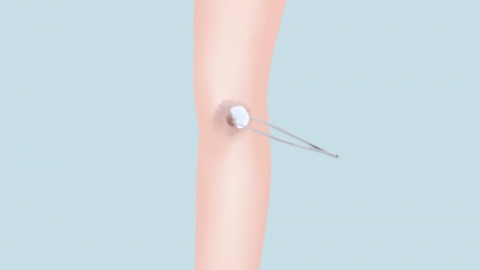What causes povidone-iodine to turn white?
Under normal circumstances, povidone-iodine may turn white when exposed to oxygen, alcohol, vitamin C, moisture, high temperature, or wound secretions. The specific explanations are as follows:

1. Oxygen: Povidone-iodine is oxidative and may undergo an oxidation reaction upon contact with oxygen in the air, causing a change in its color. This oxidation reaction is a normal phenomenon and generally does not significantly affect the disinfecting effectiveness of povidone-iodine.
2. Alcohol: Alcohol is a reducing agent. When it comes into contact with povidone-iodine, an oxidation-reduction reaction occurs. This reaction reduces the iodine in povidone-iodine to iodide ions, causing the solution to lose its color and turn white. This reaction is harmless to the human body; however, the povidone-iodine will lose its disinfecting and bactericidal properties after the reaction.
3. Vitamin C: Vitamin C also has reducing properties. When it contacts povidone-iodine, an oxidation-reduction reaction occurs, causing the povidone-iodine to turn white. Similar to alcohol, the povidone-iodine after this reaction also loses its disinfecting capability.
4. Moisture or high temperature: If povidone-iodine is exposed to high temperatures or humid environments for a prolonged period, its internal components may change, causing its color to turn white. In such cases, the disinfecting and bactericidal effectiveness of povidone-iodine may be significantly reduced. It should not be used further, as it may cause skin allergic reactions.
5. Wound secretions: When applying povidone-iodine to a wound, if there are secretions such as pus or blood due to inflammation or infection at the wound site, the components in these secretions may react with povidone-iodine, causing a change in color to white.
When using povidone-iodine, it is important to check its condition and ensure its effectiveness. If the povidone-iodine turns white and the cause is unclear, it is recommended to discontinue use and consult a professional physician or pharmacist for advice.








